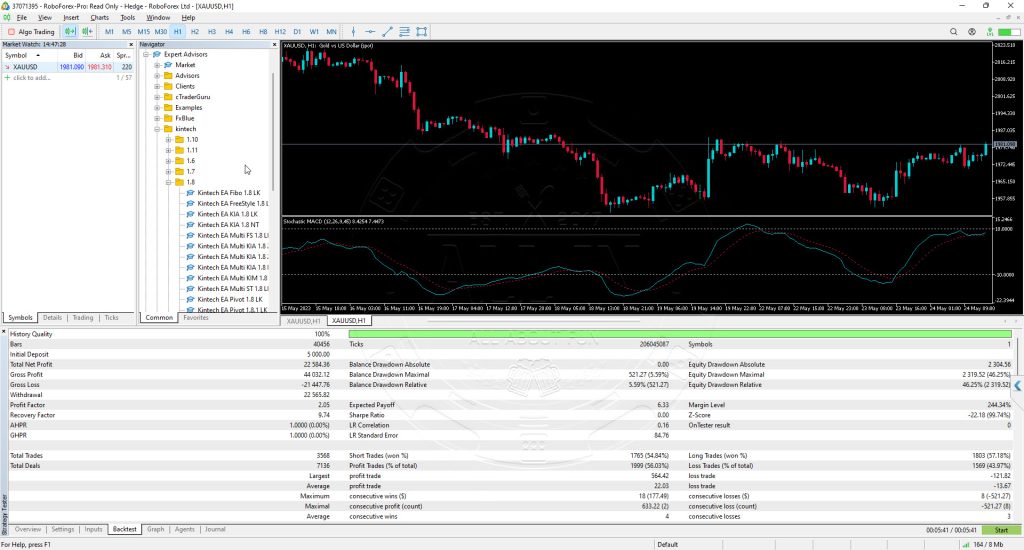If you are interested in trading gold on the foreign exchange market (Forex), you’ve come to the right place. Gold trading offers a unique opportunity to participate in one of the most sought-after commodities in the world. In this comprehensive guide, we will walk you through the process of trading gold on Forex, providing you with valuable insights and strategies to help you make informed trading decisions. So, let’s dive in!
1. Understanding the Gold Market
Before delving into the intricacies of gold trading on Forex, it’s essential to have a solid understanding of how the gold market operates. Gold is a highly valued precious metal that has been regarded as a safe haven investment for centuries. Its price is influenced by various factors, including economic trends, geopolitical events, inflation, and supply and demand dynamics.
1.1 The Impact of Three Polarities on Gold Trading
Gold trading decisions are often influenced by three polarities: sentiment, interest rates, and the U.S. dollar. Sentiment refers to the overall market sentiment and investors’ confidence. When sentiment is positive, investors are more likely to invest in riskier assets, leading to a decrease in gold prices. Conversely, negative sentiment drives investors towards safer assets like gold, resulting in an increase in prices.
Interest rates play a crucial role in gold trading. When interest rates rise, it becomes more expensive to borrow money, which can lead to a decrease in gold demand. On the other hand, lower interest rates make borrowing cheaper, stimulating economic growth and potentially increasing gold prices.
The U.S. dollar also has a significant impact on gold trading. Since gold is priced in U.S. dollars, a strong dollar usually leads to lower gold prices, as it becomes more expensive for investors holding other currencies to purchase gold. Conversely, a weaker dollar often drives up gold prices.
2. Getting Started with Gold Trading
To begin trading gold on Forex, you need to follow a few essential steps. Let’s walk through each of them.
2.1 Creating a Trading Account
The first step is to create a trading account with a reputable Forex broker. Choose a broker that offers a user-friendly trading platform, competitive spreads, and reliable customer support. Look for a broker that is regulated and has a good reputation in the industry.
2.2 Choosing the Underlying Gold Market
Once you have a trading account, you need to choose the underlying gold market you want to trade. Forex brokers typically offer various gold trading instruments, including spot gold, gold futures, and gold exchange-traded funds (ETFs). Familiarize yourself with the characteristics of each market and choose the one that aligns with your trading goals and risk tolerance.
2.3 Opening Your First Position
After selecting the gold market, it’s time to open your first position. Determine whether you want to go long (buy) or go short (sell) based on your analysis and market expectations. Use the trading platform provided by your broker to execute the trade, specifying the trade size and any desired stop-loss or take-profit levels.
3. Analyzing Gold Trades
Successful gold trading requires a solid analysis of market trends and indicators. By combining technical and fundamental analysis, you can gain valuable insights into the gold market and make more informed trading decisions.
3.1 Utilizing Technical Analysis
Technical analysis involves studying historical price charts and using various indicators to identify patterns and trends. Common technical indicators used in gold trading include moving averages, relative strength index (RSI), and Fibonacci retracements. By analyzing price patterns and indicators, traders aim to predict future price movements and identify potential entry and exit points.
3.2 Incorporating Fundamental Analysis
Fundamental analysis focuses on economic and geopolitical factors that influence gold prices. Stay informed about global economic news, central bank policies, and geopolitical developments that may impact the gold market. Factors such as inflation, interest rates, political instability, and economic indicators can provide valuable insights into future price movements.
4. Trading Gold Futures
Gold futures contracts are a popular way to trade gold on Forex. Futures contracts allow traders to buy or sell gold at a predetermined price and date in the future. Trading gold futures requires understanding contract specifications, including contract size, tick size, and expiration dates. It is crucial to manage risk carefully when trading futures, as leverage can amplify both profits and losses.
5. Spot Prices and Gold Trading
Spot gold trading involves buying or selling gold at the current market price for immediate delivery. Spot prices are influenced by real-time supply and demand dynamics and are often used as a benchmark for gold trading. Spot gold trading is popular among short-term traders and those seeking physical gold ownership.
6. Exploring Gold Trading Options
Gold trading offers various options for traders looking to diversify their portfolios. Let’s explore some of the most common options available.
6.1 Futures and Options Contracts
As mentioned earlier, gold futures contracts allow traders to speculate on the future price of gold. Options contracts, on the other hand, provide traders with the right but not the obligation to buy or sell gold at a predetermined price within a specific time frame. Both futures and options contracts offer opportunities for hedging and speculating on gold prices.
6.2 Exchange-Traded Funds (ETFs)
Gold ETFs are investment vehicles that track the price of gold and allow investors to gain exposure to the gold market without owning physical gold. ETFs provide liquidity, transparency, and flexibility, making them a popular choice for both short-term and long-term investors.
7. Settling Gold Trades
Gold trades can be settled in different ways, depending on the trading instrument and the broker’s policies.
7.1 Cash Settlement
Many gold trades, especially those conducted through futures contracts or ETFs, are settled in cash. Cash settlement means that the gains or losses from the trade are settled in cash, without any physical gold delivery.
7.2 Physical Gold Handling
In some cases, traders may choose to settle their trades by taking physical delivery of gold. This is more common in spot gold trading or certain specialized trading platforms. However, physical gold handling requires additional logistics and storage considerations.
8. Monitoring and Managing Gold Trades
Once you have entered a gold trade, it’s crucial to monitor and manage it effectively. Keep track of market developments, implement appropriate risk management strategies, and adjust your trade if necessary. Use stop-loss orders to limit potential losses and take-profit orders to secure profits.
9. Tips for Successful Gold Trading
To enhance your chances of success in gold trading on Forex, consider the following tips:
- Stay updated with market news and events that may impact gold prices.
- Develop a trading strategy based on a combination of technical and fundamental analysis.
- Practice proper risk management and set realistic profit targets.
- Use stop-loss and take-profit orders to manage your trades effectively.
- Continuously educate yourself and stay open to learning from both successes and failures.
Conclusion
Trading gold on Forex can be a rewarding and exciting venture, provided you approach it with the right knowledge and strategies. By understanding the gold market, choosing the right trading instruments, conducting thorough analysis, and managing your trades effectively, you can increase your chances of success in gold trading. Remember to stay informed, adapt to market conditions, and continuously refine your trading skills. Happy trading!
FAQs
1. Is trading gold on Forex risky? Trading gold, like any other investment, carries risks. The gold market can be volatile, and prices can fluctuate based on various factors. It is essential to conduct thorough analysis and practice proper risk management to mitigate potential risks.
2. Can I trade gold on Forex using a demo account? Yes, many Forex brokers offer demo accounts that allow you to practice trading gold and other instruments using virtual money. Demo accounts are a great way to familiarize yourself with the trading platform and test your strategies before risking real money.
3. What is the minimum capital required to start trading gold on Forex? The minimum capital required can vary depending on the broker and the trading account type. Some brokers offer micro or mini accounts with lower minimum deposit requirements, while others may have higher minimums for standard accounts. It’s important to choose a trading account that aligns with your financial situation and risk tolerance.
4. Can I trade gold on Forex 24/7? Yes, the Forex market operates 24 hours a day, five days a week. However, specific gold markets may have their trading hours, so it’s important to check the trading hours of the market you are interested in.
5. Are there any tax implications for trading gold on Forex? Tax regulations regarding gold trading can vary depending on your country of residence. It is advisable to consult with a tax professional or financial advisor to understand the tax implications and reporting requirements specific to your jurisdiction.





